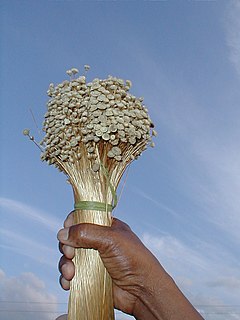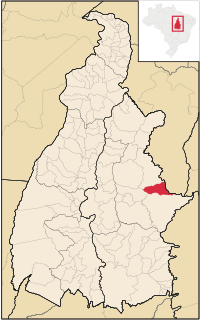| Novo River | |
|---|---|
| Other name(s) | Rio Novo |
| Country | Brazil |
| Physical characteristics | |
| Main source | Mateiros, Tocantins 10°47′42″S46°19′50″W / 10.795094°S 46.330606°W |
| River mouth | Do Sono River 10°10′57″S46°56′08″W / 10.182454°S 46.935580°W Coordinates: 10°10′57″S46°56′08″W / 10.182454°S 46.935580°W |
| Basin features | |
| River system | Do Sono River |
The Novo River is a river of Tocantins state, Brazil. It is a headwater of the Do Sono River.

Tocantins is one of the states of Brazil.. It is the newest of the 26 Brazilian states, formed in 1988 and encompassing what had formerly been the northern two-fifths of the state of Goiás. Tocantins covers 277,620.91 square kilometres (107,190.03 sq mi) and has a population of 1,496,880. Construction of its capital, Palmas, began in 1989; most of the other cities in the state date to the Portuguese colonial period. With the exception of Araguaína there are few other cities with a significant population in the state. The government has invested in a new capital, a major hydropower dam, railroads and related infrastructure to develop this primarily agricultural area.

The Do Sono River is a river of Tocantins state in central Brazil. It is a right tributary of the Tocantins River.
The Novo river forms to the south of the 158,885 hectares (392,610 acres) Jalapão State Park, a fully protected conservation unit created in 2001. [1] It runs north along the west boundary of the park to the point where it meets the Soninho River from the left to form the Do Sono River.

Jalapão State Park is a state park in the microregion of Jalapão in eastern Tocantins, Brazil. It contains a variety of landscapes including cerrado vegetation, sand dunes and flat-topped plateaus.

The Soninho River is a river of Tocantins state, Brazil. It is a headwater of the Do Sono River.












